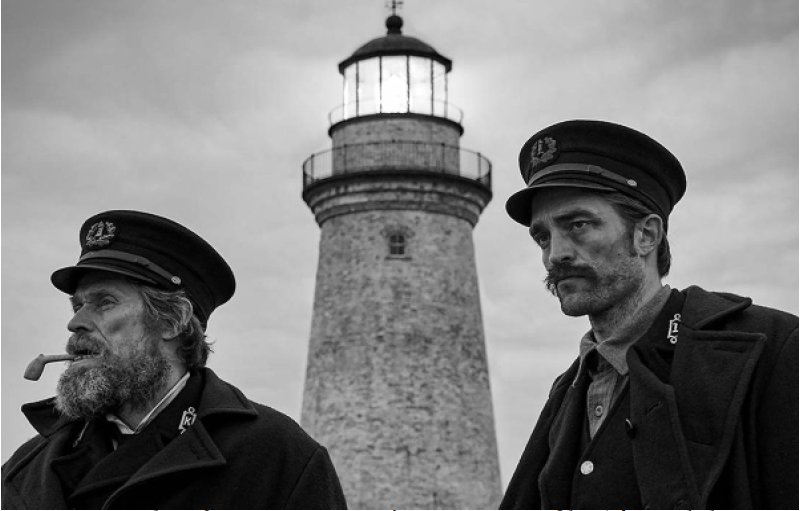Robert Eggers’s Film Features Chilling Titanic Performances and Horror to Create the Perfect Storm
Bobby Sweeney
Robert Eggers’s first feature film, The Witch (2015), is a chilling tale about a Pilgrim family living in the Massachusetts wilderness after being thrown out of their colony. In this eerie setting, tensions grow between each family member as suspicions of a witch start to rise. At its release, The Witch was widely acclaimed by audiences and critics alike, regarded as a breath of fresh air in horror. His latest feature, The Lighthouse, might solidify his name as one to watch out for.
The Lighthouse is a film that centers on two lighthouse-keepers that arrive at a mysterious, secluded lighthouse in New England. The two keepers, played by Robert Pattinson and Willem Dafoe, must preserve the lighthouse and maintain their sanity on the sinister island.
Pattinson’s performance as the younger keeper is gripping and horrifically transformative throughout the film. We witness Pattinson transform from a silent lighthouse keeper with a mysterious past to a screaming madman balancing on the edge of sanity.
Dafoe’s portrayal of the grizzled lighthouse keeper commands each scene with a sense of authority, from his commanding tone to his presence around Pattinson’s younger character. Every piece of his performance is grounded in the elderly “sailor-wisdom” he retains, as he warns Pattinson with superstitions and scolds him on how to do his job. This “sailor-wisdom” seeps into his stern instructions to Pattinson, generating many towering and harsh monologues between the two.
These titanic characters carry the film, as frequent clashes between the two result often in screaming matches between the weathered sailor and the younger lighthouse keeper. These monologues reveal the characters’ darkest secrets and point to several of the films themes. While their casual meals and binge drinking bring the two together, it also pulls them apart.
While the hypnotic scenes and chilling visuals add to the tones and themes of the film, it is the writing, performances, and Eggers’s attention to detail that really carry The Lighthouse. The film is colored in black and white with a small aspect ratio that makes the story feel more personal and focused, as if the audience is secretly peeking into a crack in the wall to view a horrific tale that they were not meant to see. It also compliments the small cast and the static, lonely location. The cinematography ranges from grand, climbing shots of the lighthouse itself, building the location as a symbol, to dreamy and sometimes shocking sequences of hallucinations. From killing seagulls to tempting mermaids, the film borrows from sailing superstitions and mythology. Eggers stresses the importance of research while writing and filming. For example, in The Witch, Eggers’s script is written in old, Puritan English with focus on religious beliefs.
The Lighthouse shines in its ability to be re-watched over and over again. This is thanks to its multiple messages and themes which focus on the feeling of isolation and its effects on one’s behavior, old versus young, and the exploration of identity. With stunning filmmaking beautifully married to a two-man performance, The Lighthouse is not only sure to be an Oscar contender, but a cult classic in years to come.



